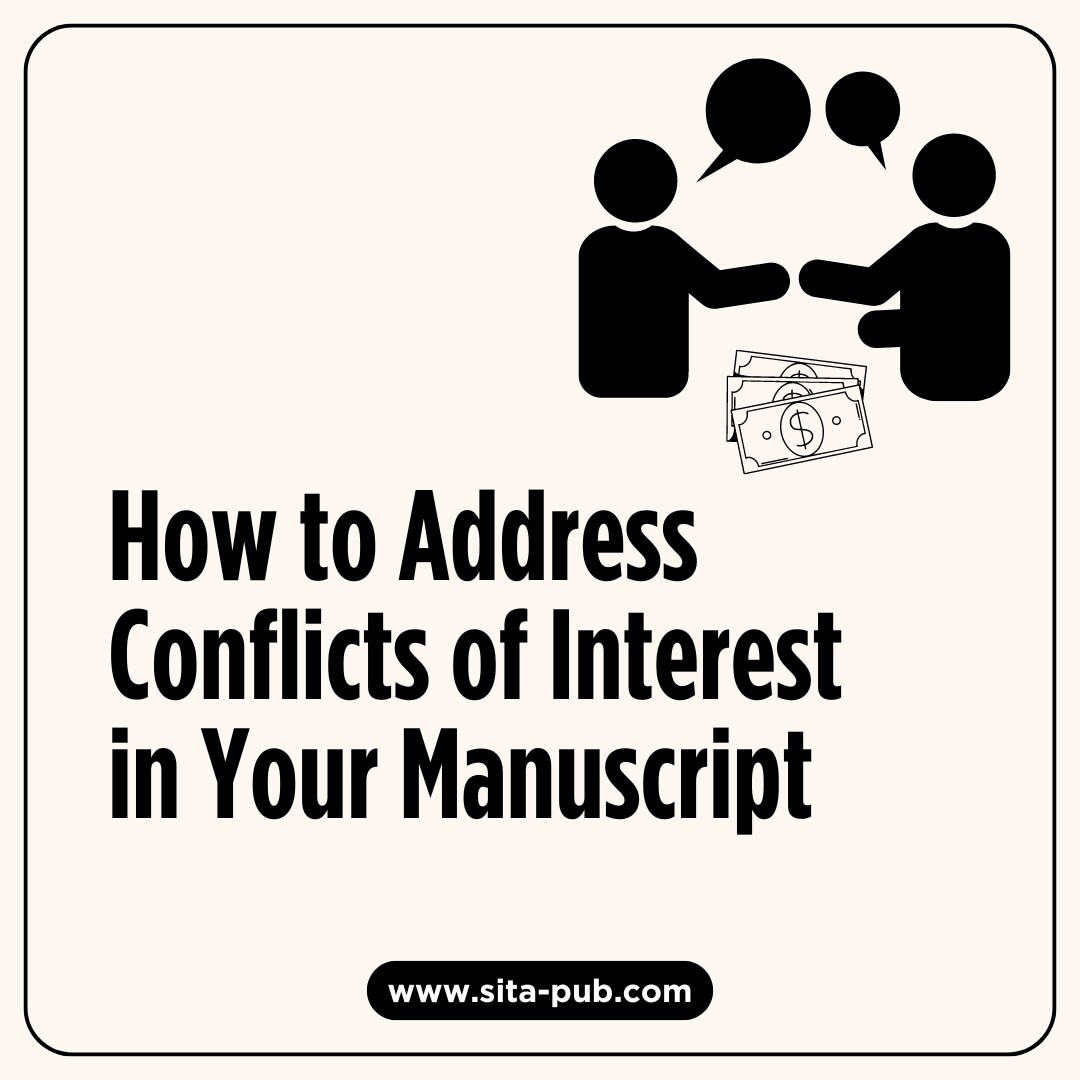How to Address Conflicts of Interest in Your Manuscript


Conflicts of interest (COIs) can significantly affect research integrity. Addressing these issues clearly in your manuscript is essential for maintaining academic integrity within the research community. This guide will help you understand and manage conflicts of interest effectively.
A conflict of interest occurs when personal, financial, or professional relationships might influence the results or conclusions of research. Common examples include:
Financial Support: If an organization funds your research, it could create a conflict. For instance, if a company pays you to study their product, it may affect how you report the results.
Personal Relationships: Close relationships with individuals in your field might bias your research. For example, being friends with a colleague whose work you are evaluating could influence your judgment.
Employment or Consulting: Working for a company related to your research can also lead to conflicts.


Before writing your manuscript, review any relationships or financial ties that might be perceived as conflicts. Consider the following:
Funding Sources: List all organizations that provided financial support for your research.
Advisory Roles: Have you served as an advisor for any organizations? Include both paid and unpaid positions.
Investments: Do you own stocks or have investments in companies related to your research? These could also be seen as conflicts.

Most academic journals require authors to disclose any conflicts of interest in a dedicated section. Here’s how to do it:
Location: Create a section in your manuscript titled "Conflicts of Interest" or "Disclosure of Interests" to make it clear to readers.
Content: State any potential conflicts clearly, such as:
“The author has received funding from [Organization Name].”
“The author serves as a consultant for [Company Name].”

Honesty about conflicts of interest is crucial. If you do not have any conflicts, state that clearly:
“The authors declare that there are no conflicts of interest.” This builds trust with your readers.

Each journal has specific rules regarding how to disclose conflicts of interest. Review the submission guidelines carefully before submitting your manuscript to ensure compliance. This will help you avoid any issues during the review process. If your situation changes after submission, such as receiving new funding or forming new relationships, update your disclosure. Keeping the journal informed of any changes maintains the integrity of your research.
Addressing conflicts of interest in your manuscript is essential for upholding research integrity. By identifying, disclosing, and being transparent about potential conflicts, you contribute to ethical research practices and enhance the credibility of your work. Always follow the specific guidelines of the journal you are submitting to and prioritize transparency throughout the publication process.
By doing so, you foster a more ethical and trustworthy academic environment, which ultimately benefits the entire research community. This commitment to transparency not only protects your reputation but also supports the integrity of scientific inquiry as a whole. Your efforts will help ensure that research findings are viewed as reliable and unbiased.

Are you willing to publish your research? At SITA Academy, we offer comprehensive publication support services to help you streamline the submission process. From manuscript formatting to journal selection, our expert team is committed to ensuring that your work receives the attention it deserves. Don't let the difficulties of publishing hold you back—submit your paper to us today and propel your academic career!
If you have any questions, inquiries, or would like to learn more about our services, please don't hesitate to reach out to us. Our dedicated team is ready to assist you.